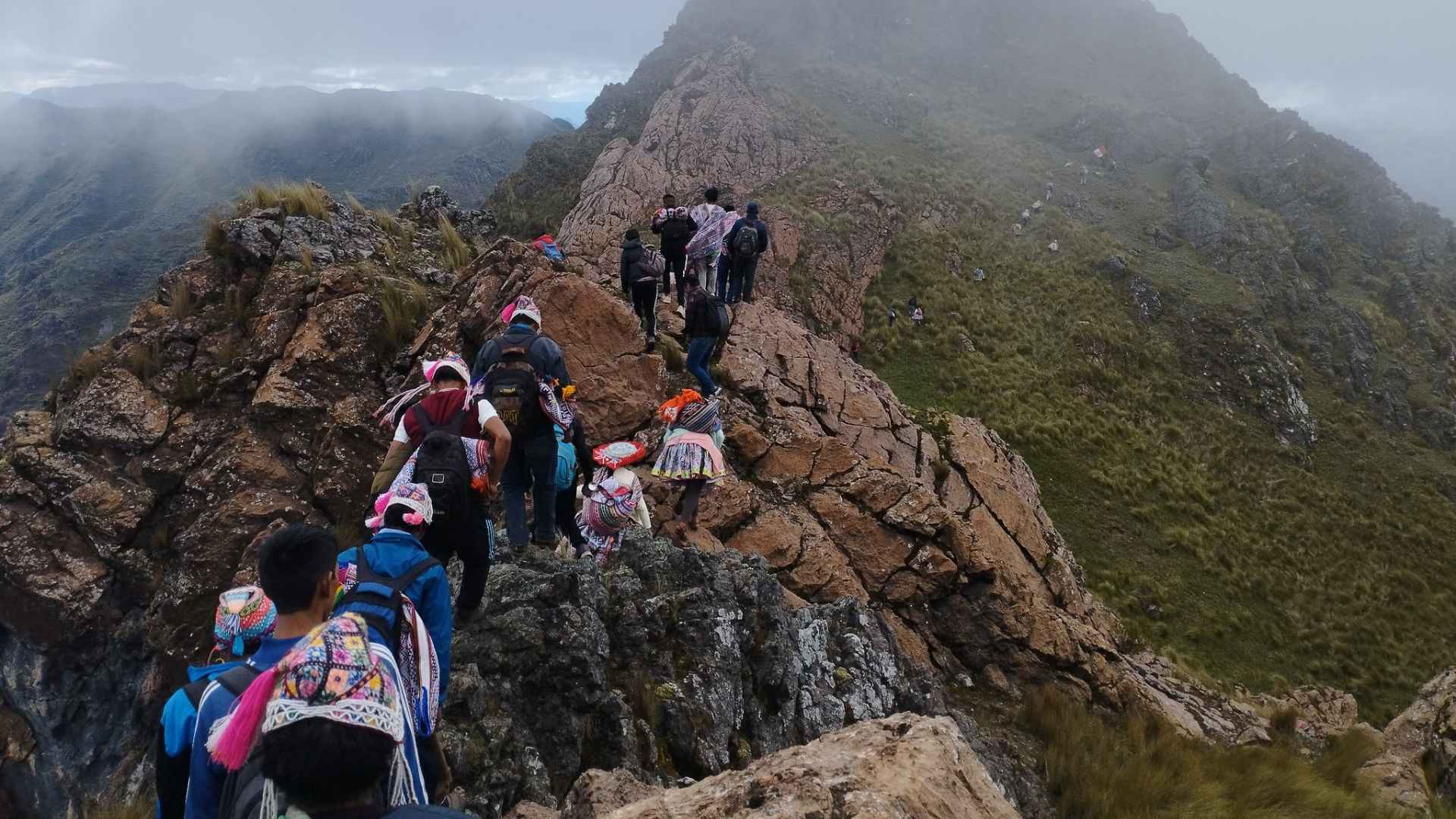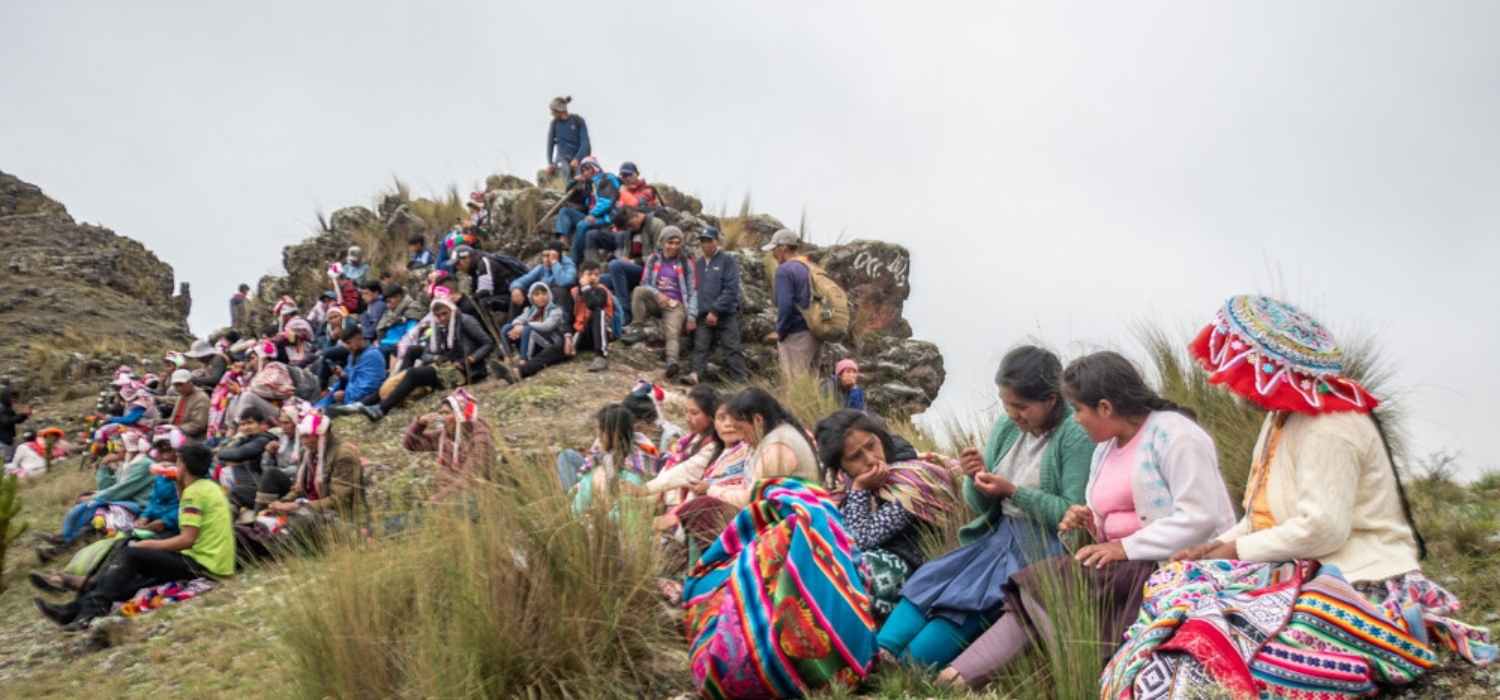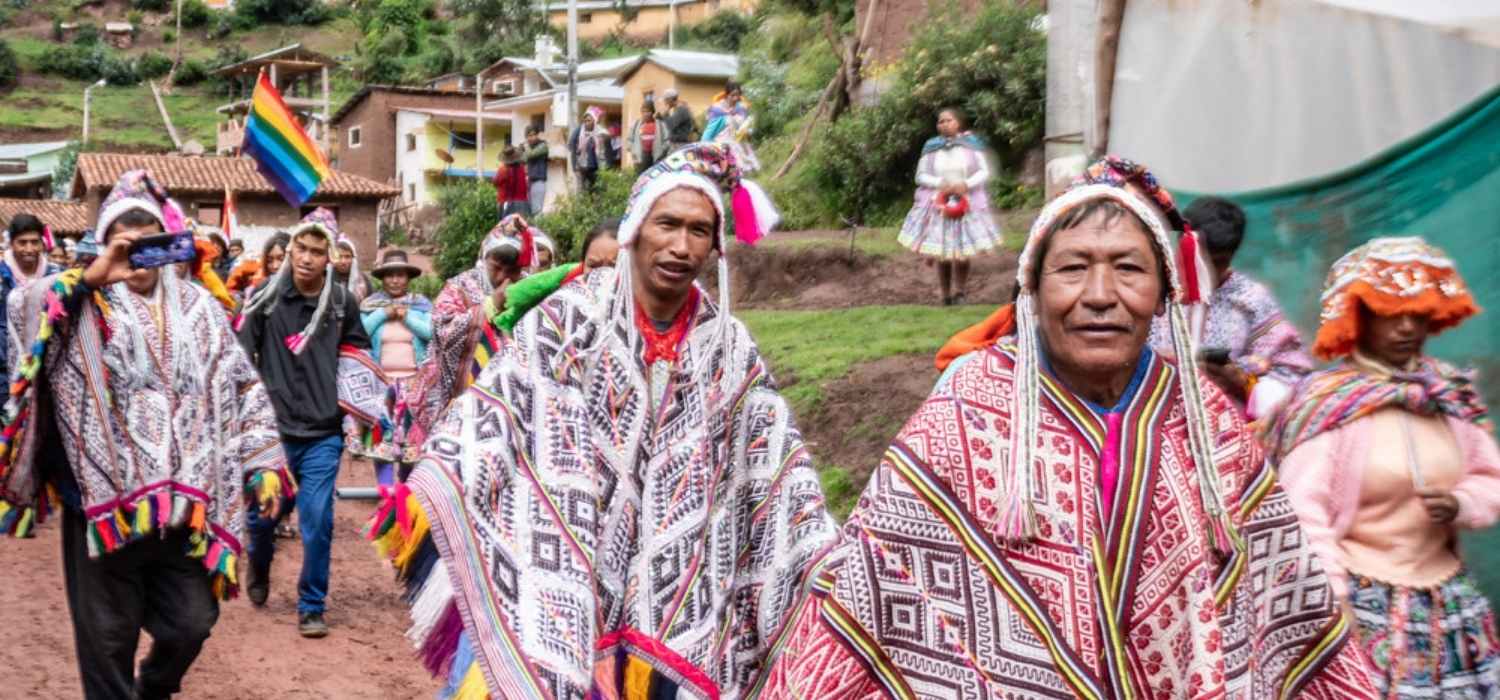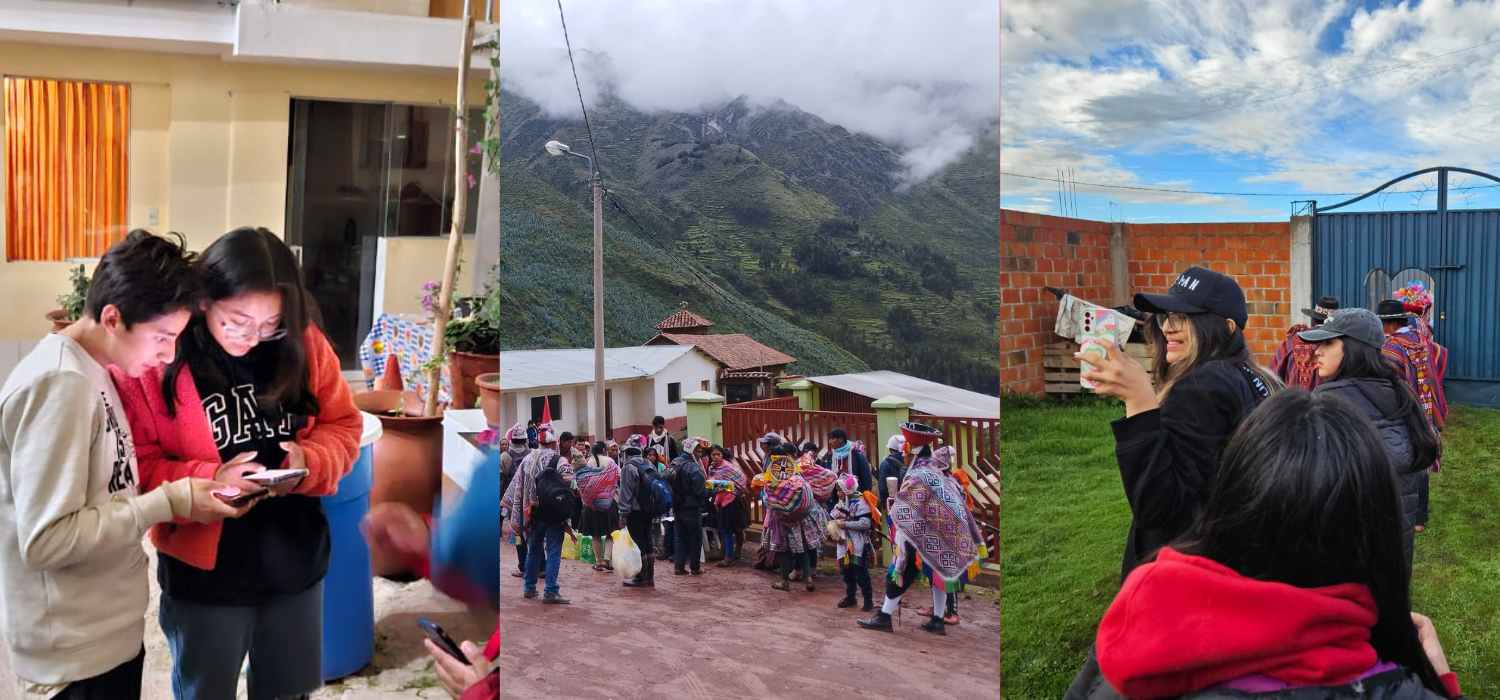News — 28 May, 2024
Mapping Andean Culture: A Journey Through Linderaje in Cusco

Teachers at GAL School in Cusco, Peru use open mapping tools to document and preserve traditions such as linderaje, merging technology with ancestral practices. Through the Open Mapping for All program, teachers and students employ empowerment and participation technologies, thereby strengthening education and community identity.
Versión en español / Versão em português
In Cusco, Peru, the ancient practice of linderaje dates back to ancestral times and has deep roots in Andean culture. This tradition persists to this day, where communities gather to carry out symbolic rituals and ceremonies that not only mark territorial boundaries but also significantly reinforce social and cultural bonds.
Our story unfolds within this enriched cultural context. The rich Andean tradition converges with the enthusiasm of teachers from GAL School, who have learned to integrate open mapping tools into education through our program Open Mapping for All (OM4A).
Through their curriculum, teachers like Gilmar Vergara, a science and technology teacher, Rosemarie Serrano, a teacher of subjects such as Quechua and Interculturality, and Paola Araujo, an educational psychologist, advocate for social impact mapping to document collaboration and respect for territorial boundaries through personalized training and tools—values that have been fundamental in Peruvian culture for centuries.
Integrating Open Mapping into Andean Culture

Through mapping, we delve into the fascinating world of linderaje, a tradition where two communities meet at a sort of border and celebrate together the establishment of their respective territorial limits. What’s interesting about this practice is that it goes beyond marking territories; it involves a process where communities incorporate dances and shared meals, strengthening social and cultural ties.
Paola Araujo, a psychologist and teacher, accompanies students at the initial, primary, and secondary levels, focusing on their holistic development. Specifically with secondary students, she is dedicated to incorporating open mapping tools into various academic areas. In 2019, she trained with the Humanitarian OpenStreetMap Team (HOT) to choose the most suitable tools for different mapping projects.
Teachers share that the school employs an active teaching methodology that promotes critical thinking, contextual learning, and experiential experiences for students. Therefore, the rich cultural tradition of Cusco has been used to enrich educational experiences directly in the field.
Experiencing Linderaje in Chinchero, Cusco

From the Cusco perspective, Gilmar Vergara, a Science and Technology teacher, highlights linderaje as a deeply rooted and authentic tradition in Andean culture. It arises with the purpose of establishing territorial boundaries in an environment of peace and harmony, becoming an opportunity during carnival festivities; which stands out as a manifestation of cultural and social identity in rural communities of Peru.
In this context, a secondary grade was selected to integrate competencies and performances of various courses, including citizenship, social studies, and Quechua. These courses emphasize the local language and customs, essential for understanding and valuing the culture of the communities.
In the Chincheros linderaje, 18 students participated. They arrived a day earlier to acclimatize, as they slept at 3800 meters above sea level. That day they conducted a nighttime test with digital tools like OSMTracker, Relieve, and uMap, ensuring their functionality for the journey.
On the day of the linderaje, despite expecting a light walk through the lower area of Chincheros, the route was more demanding, including ascents and descents through hills, which was a challenge for all participants, especially for students around fifteen years old.

Paola explains that the tradition requires that before starting the linderaje, participants visit the homes of important community leaders to receive blessings, food, and drink, a gesture of hospitality and respect. This ritual is repeated in several houses before converging at a central point where the tradition officially begins. During the journey, strategic stops are made to pray and place flags marking the progress.
During the festivity, communities celebrate life and reinforce territorial boundaries, strengthening social bonds under the leadership of traditional authorities. The wifalas, known as dances with white flags, add vitality to the ritual, marking the territory peacefully with symbols like the white flag. Community leaders prepare young people for leadership roles, creating a community bond based on respect and collaboration.
Implementing Open Mapping Tools in Linderaje
The students used various digital tools to document the experience, ensuring that every aspect of linderaje was captured and they could collect all the data once they returned to Cusco. During the exercise, they used tools to map the route, take photos, and mark geographic points.
Among the tools used are:
-
Organic Maps: used to collect precise GPS traces before the linderaje.
-
OSM Tracker: allowed adding photos, videos, and notes at each point of the route.
-
AllTrails: used for navigation and offering different visual documentation options.
-
uMap and Relive: facilitated the creation of visual stories combining traces with photos and videos.
Paola concludes that the greatest impact of open mapping applications is their ability to efficiently organize the information that students collect. These digital tools facilitate taking photos, recording videos, and automatically logging routes, optimizing data organization and collection during educational activities. This aspect has been particularly impactful and impressive for the students.
Map of the routes taken by GAL School students created by Gilmar Vergara on uMap.
Reflections on Learning for Students

Mery highlights that after the experience, students better understand how the competencies of the Andean Culture and Quechua course focus on valuing culture and oral expression. They observed how a culture rooted in oral tradition is effectively organized, dispensing with the written documentation required by Peruvian laws and constitution. It is about recognizing and transmitting the word communally. Additionally, students faced the challenge of applying their Quechua knowledge when interacting with native speakers, thus strengthening their oral competence in the language.
When asked about students’ observations on why to live this linderaje experience if maps already exist, Mery responds that there were indeed classroom debates on this topic.
At the beginning of the project last year, many of them considered this practice outdated in the modern era, given that we now have advanced technology to address or regulate geographic issues through laws. However, by participating in the activity, they realized the importance of this tradition as it allowed them to walk and recognize the territory and feel an integral part of it.
Although the territory belongs to the community as a whole, students feel that through this exercise, every part of it also belongs to them.
This immersive and challenging experience not only allowed students to use various tools for practical learning but also strengthened their connection with cultural and community heritage.
Mapping tools, while useful for visualizing and sharing information about boundaries and pinpointing landmarks, do not replace the tradition of linderaje among Andean communities. In this context, technology acts as a complement to the rich culture, which remains the protagonist. The students who participated in the educational project experienced field mapping, directly involving themselves in an ancestral custom, making it a unique and deeply meaningful educational experience.

